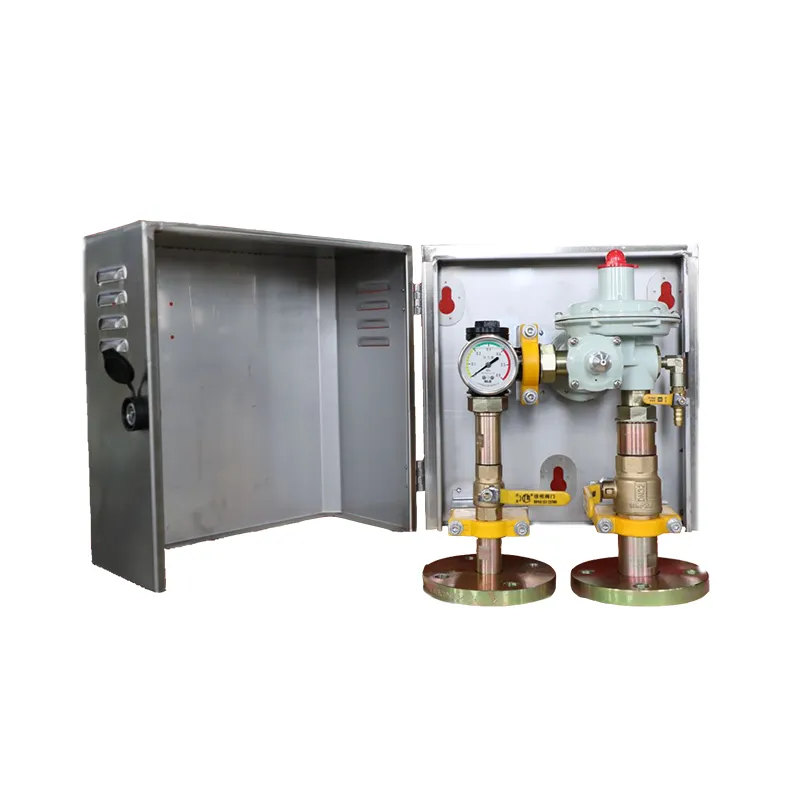
Nov . 27, 2024 14:25
Back to list
Gas Pressure Regulation Device for Efficient Pressure Control and Safe Operations
Understanding Gas Pressure Reducers Functions and Applications
Gas pressure reducers are crucial components in various industries and applications, ensuring safe and efficient gas utilization. Their primary function is to regulate the pressure of gases, delivering them at a controlled and manageable level. This process is essential in many fields, including industrial manufacturing, medical applications, and household uses.
What is a Gas Pressure Reducer?
A gas pressure reducer, often referred to as a pressure regulator, is a device that reduces the high inlet pressure of a gas to a lower, manageable outlet pressure. Most commonly found in systems dealing with gases such as propane, natural gas, or industrial gases like oxygen and nitrogen, these reducers maintain consistent pressure levels despite fluctuations in the inlet pressure or variations in the demand for gas.
How Does a Gas Pressure Reducer Work?
The operation of a gas pressure reducer is based on the principles of gas flow mechanics. When gas enters the regulator, it first passes through an adjustable valve. This valve controls the flow according to the required outlet pressure. Inside the reducer, there is often a diaphragm that moves in response to the pressure changes. When the pressure downstream falls below a setpoint, the diaphragm moves to open the valve wider, allowing more gas to enter the system. Conversely, if the downstream pressure exceeds the setpoint, the diaphragm pushes the valve closed, reducing the gas flow. This constant adjustment allows for a steady delivery of gas at the desired pressure.
Importance of Pressure Reduction
The importance of gas pressure reducers cannot be overstated. High-pressure gases can be dangerous; they can lead to equipment failure, leaks, or even catastrophic explosions. By using a pressure reducer, industries can ensure safe operations, protect their equipment, and maintain optimal working conditions.
In the medical field, for example, oxygen pressure reducers are vital in providing patients with the correct flow of oxygen. These devices ensure that medical staff can administer gas safely, without the risk of high-pressure hazards. Similarly, in welding or cutting operations, proper gas pressure is crucial for achieving clean and effective results, demonstrating the necessity of pressure reducers in these applications.
gas pressure reducer

Applications of Gas Pressure Reducers
Gas pressure reducers find their use across various sectors. In residential settings, they are commonly found in gas stoves and heating systems, ensuring that natural gas is delivered at a safe pressure for use in appliances. In industrial applications, they are vital for processes that require a constant flow of gases, such as chemical manufacturing, where precise gas flow rates can affect product quality.
They are also integral in the food and beverage industry, where they regulate gases used in carbonation and packaging processes. Additionally, in aquaculture and water treatment, gas regulators manage aeration systems, delivering the required oxygen levels for aquatic life.
Choosing the Right Gas Pressure Reducer
Selecting the appropriate gas pressure reducer involves considering several factors, such as the type of gas, the required outlet pressure, flow rate, and the specific application. It is also essential to consider the materials used in manufacturing the reducer, especially when dealing with corrosive gases. Ensuring compatibility between the reducer and the gas is vital for safety and performance.
Conclusion
Gas pressure reducers play an essential role in various applications by managing gas flow and ensuring safety. From industrial processes to household appliances, these devices are integral to the efficient functioning of gas systems. As technology advances, the design and capabilities of pressure regulators continue to improve, providing enhanced safety and efficiency in gas management. Understanding their operation and importance helps industries utilize these devices effectively, contributing to safer and more efficient gas usage across the board.
In conclusion, the significance of gas pressure reducers cannot be underestimated in our gas-dependent world, making them indispensable in ensuring safe and efficient delivery of gases in many applications.
Latest news
-
Safety Valve Spring-Loaded Design Overpressure ProtectionNewsJul.25,2025
-
Precision Voltage Regulator AC5 Accuracy Grade PerformanceNewsJul.25,2025
-
Natural Gas Pressure Regulating Skid Industrial Pipeline ApplicationsNewsJul.25,2025
-
Natural Gas Filter Stainless Steel Mesh Element DesignNewsJul.25,2025
-
Gas Pressure Regulator Valve Direct-Acting Spring-Loaded DesignNewsJul.25,2025
-
Decompression Equipment Multi-Stage Heat Exchange System DesignNewsJul.25,2025

